100% New Mexico Initiative
100% POWER HOUR
100% Family Center Project
PLEASE NOTE: This page contains supplemental information for attendees of the 100% New Mexico initiative Power Hours. Attendance is free, but registration is required. Please register here. This page also guides local readiness workshops for county initiatives.
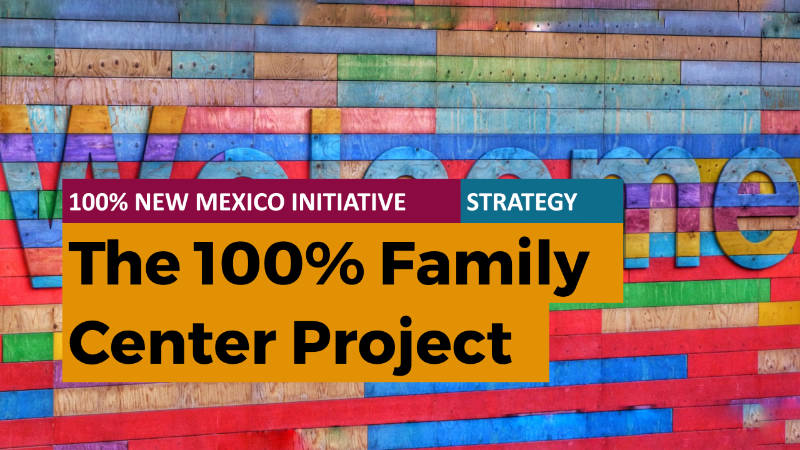
100% NEW MEXICO INITIATIVE: STRATEGY
100% Family Center
We are providing the slides and narrative text used in the 100% Family Center Project webinar being offered by the Anna, Age Eight Institute. The webinar is designed to give 100% New Mexico initiative members an overview of key concepts and issues related to implementing the initiative in their county with a focus on strengthening the community schools model in each county. Currently ten counties are engaged in the initiative.
Webinar participants are encouraged to enroll in the 100% Power Hour webinar series for more background in the initiative. We also invite you to use this page for local presentations in order to increase public awareness of adverse childhood experiences (ACEs), trauma, social adversity and the data-driven prevention strategy of community schools.

Before we begin our presentation, we want to allow for a moment of quiet reflection. Please take a minute to perform the self-care of your choice.
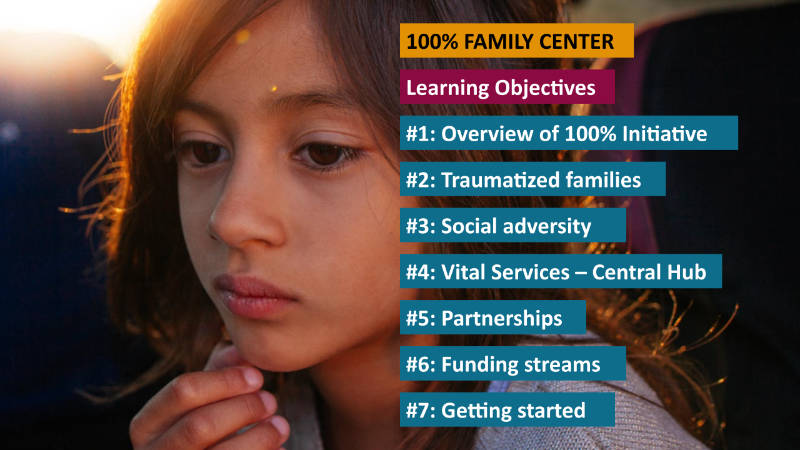
The learning objectives of the 100% Family Center Project webinar are that participants completing the webinar will be able to describe an overview of: the 100% New Mexico initiative, health and safety challenges families endure do to the impact of ACEs, trauma and social adversity; the one-stop service hub model; the power of partnerships to enhance service delivery of ten vital services for surviving and thriving; funding streams and return on investment; and getting started.
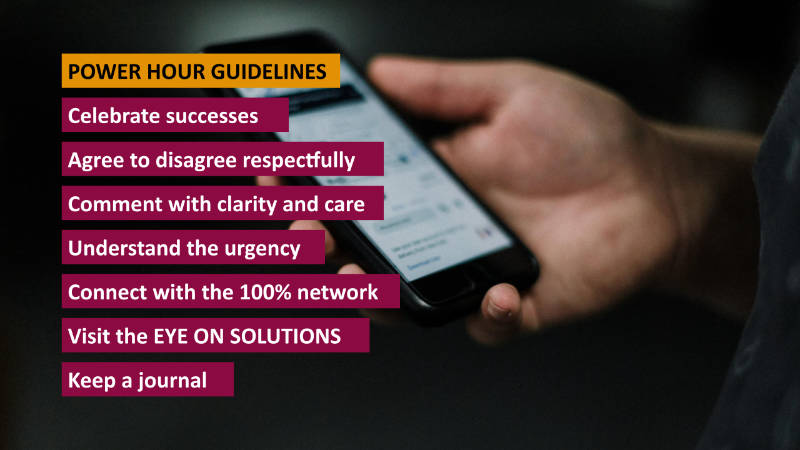
Participant Guidelines: The 100% Power Hour process is designed to create a vehicle for building awareness of the initiative and serve as a catalyst for ongoing local community dialogue. The presentation design follows the “teach the teacher” format, developed to allow participants to provide the presentation to their initiative members and local stakeholders. To create an environment for community dialogue, we offer simple guidelines.

Acknowledgements: We acknowledge the contribution of all initiative members across the state who have been part of the iterative process of developing the 100% New Mexico initiative to meet the unique needs of rural and urban families, as well as those serving culturally and economically diverse populations in the south and west. We also are grateful to the state and local lawmakers who have supported the initiative.

PART ONE: 100% New Mexico initiative: Challenges and Solutions
The 100% New Mexico initiative, like many health initiatives across the state and country, seeks to prevent the costly challenges that diminish the lives of children, students and adults. We don’t lack data that documents our students’ health and safety challenges. Every state department of health provides data on the incidence of illness, injury and violence, along with reports that detail our students’ troubling experiences with challenges outside the home. We don’t lack data to illustrate how many of our students are struggling with schoolwork or dropping out. We know the risk for ongoing substance use disorders, violence, untreated mental health challenges and joblessness.
We are united in ensuring that 100% of county residents have access to the ten vital services for surviving and thriving. This presentation will provide an overview of one of the three key strategies for empowering students and families called the one-stop service hub/100% Family Center model.
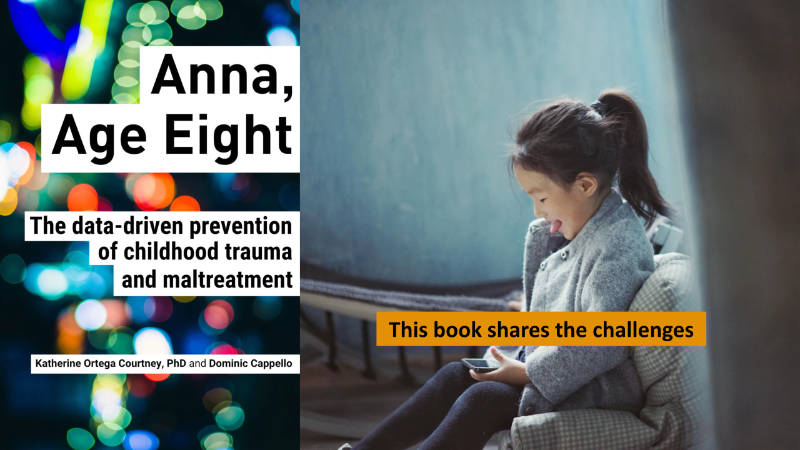
The 100% New Mexico initiative is the centerpiece of the Anna, Age Eight Institute’s programming. It was developed by institute co-directors Katherine Ortega Courtney, PhD and Dominic Cappello who are the co-authors of Anna, Age Eight and 100% Community.
Anna, Age Eight: The data-driven prevention of childhood trauma and maltreatment guides communities in addressing epidemic rates of adverse childhood experiences (ACEs) that occur in the home and social adversity that families face outside their door. The book also addresses the role of schools in preventing adverse childhood experiences (ACEs) and trauma.

100% Community: Ensuring 10 vital services for surviving and thriving is the blueprint that 100% New Mexico initiative participants are using to assess barriers to vital service and build a countywide system of care that includes timely access to vital services. The book details how we collaborate to build the services in each county. One of the ten vital services would be a fully-resourced community school.
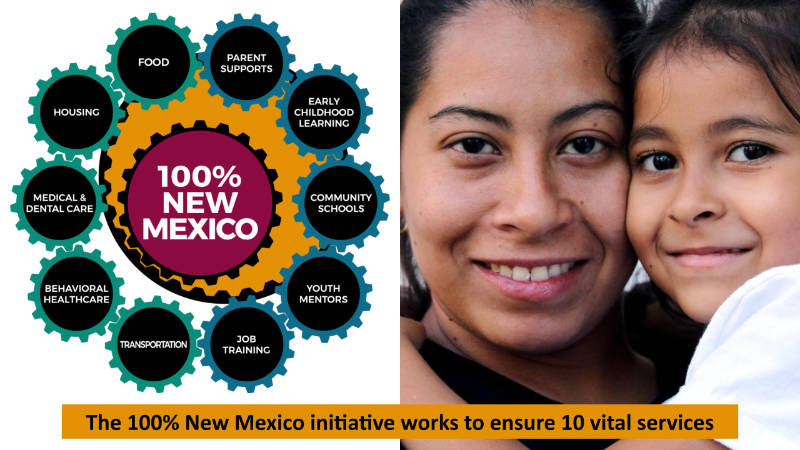
The 100% New Mexico initiative is working, county by county, to ensure the ten vital services for surviving and thriving. Our children, students and families can only struggle without these services shown to increase health, safety and resilience for residents of all ages. The initiative aligns the local work of county and city leaders committed to health equity and racial justice.

Adverse childhood experiences (ACEs) are ten forms of adversity, abuse and neglect that children endure in the home. As we begin, we wish to point out as many as a fourth to half our students are enduring the ten ACEs. Even those students who may be fortunate enough to score a 0 on the ten-question ACEs survey navigate a homelife, school and community of those with much higher scores.
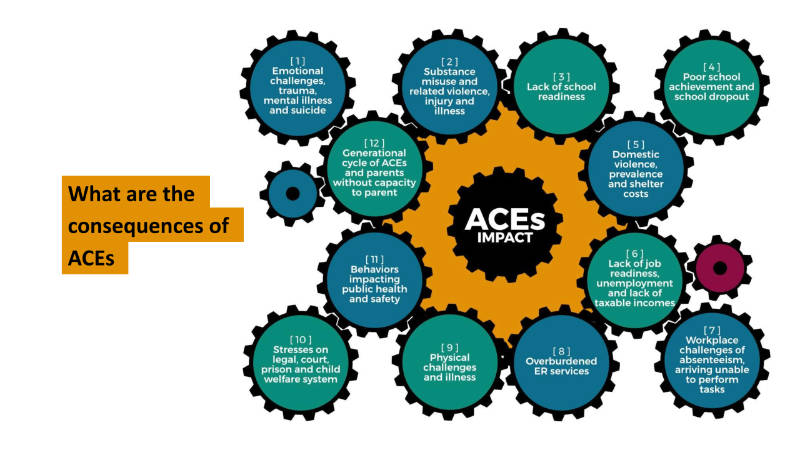
The impact of ACEs does not stay in the home. Almost all our costly health and social challenges can be traced back to ACEs, trauma and the ways people cope with damaged families. Adults with untreated trauma due to ACEs can struggle to learn, parent, work and become a contributing member of the community.
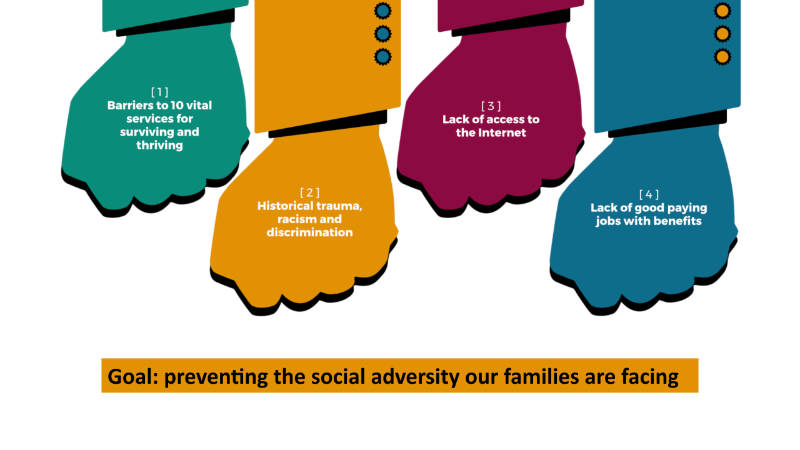
Social adversity arrives once one steps outside their door. Adversity in the form of service barriers, discimination, lack of access to the internet and living in areas without good paying jobs can diminish the lives of children, students, parents, caregiving grandparents and all county residents.
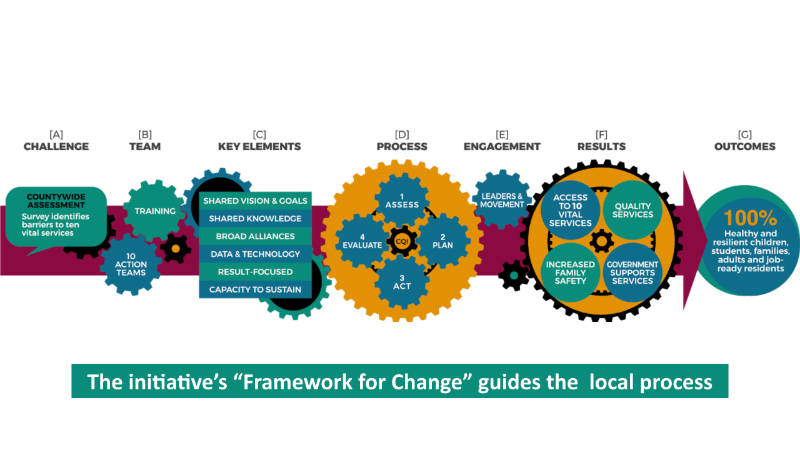
Our initiative is guided by a “Framework for Change.” In our “Framework for Change” action is the “D” part of the four-phase continuous quality improvement process. Action, including fundraising, is all part of the change process that leads us to “E” and engagement. This means leadership and a local movement committed to our desired result: 100% of our kids and families thrive.
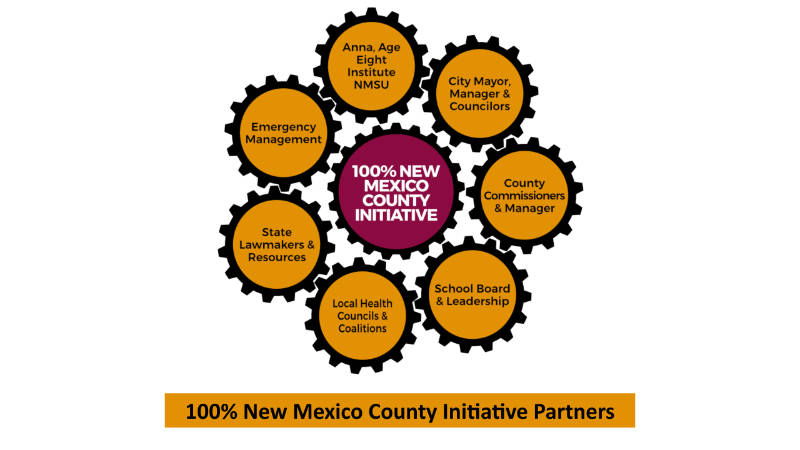
The county initiative teams are building and strengthening relationships with a variety of partners on the state, county and city levels. The partners are key to securing funding and support for local 100% New Mexico projects.
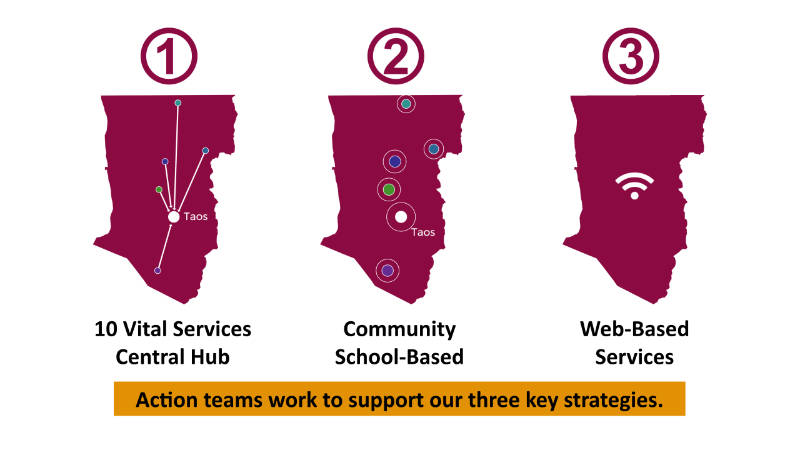
Change agents work on our three key strategies: 1) creating a 100% Family Center which is a “one-stop shop” and central hub for ten vital services, 2) making every school a fully-resourced community school which serves as a service hub with ten services, and 3) ensuring internet access across the county to make web-based services and supports a reality.
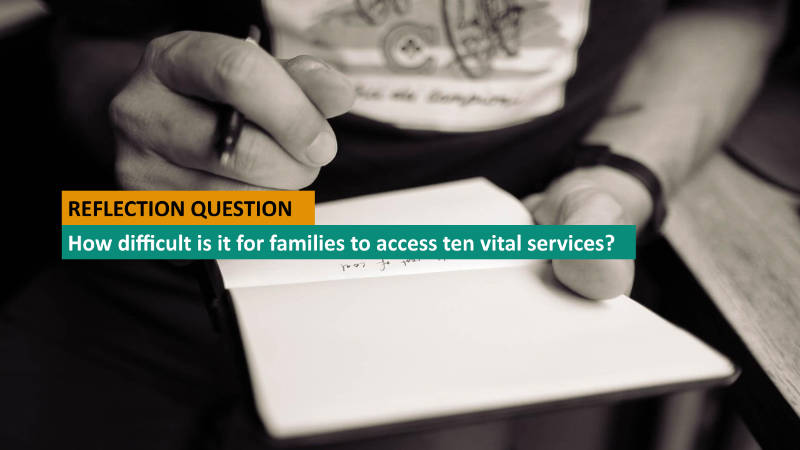
REFLECTION QUESTION: As you think about the problems and solutions presented in the initiative overview, take a few moments to reflect on the challenges your families endure when trying to access vital services.

PART TWO: What is a 100% Family Center: One-stop service hub?
The 100% Family Center has many functions to meet the vital needs of residents, ensuring their access to the ten vital services for surviving and thriving. The Center will work in alignment with all service providers to strengthen existing services that prevent adverse childhood experiences, family trauma, social adversity and all related health challenges. The goal of the Center is to be the one-stop service hub for the ten vital services.
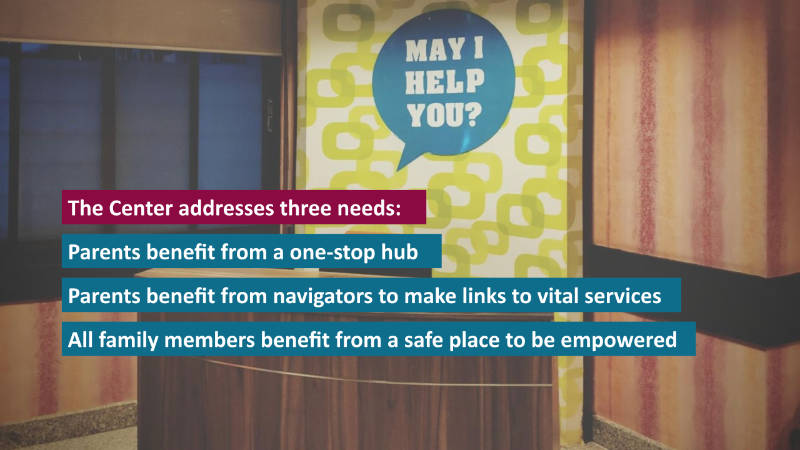
A Family Center and Innovation Center
The 100% Family Center is unlike any other center offering supports. It is designed by community stakeholders who are familiar with the research focused on the social determinants of health, historical disparities and the goals of health equity and social justice. The Center is a base from which to offer onsite and/or through the web, all ten vital services for surviving and thriving.

The Center will also house the local 100% New Mexico Initiative. The county-based initiative is implementing a data-driven strategy to identify resident’s access to ten vital services, challenges to access, and building local buyin from city and county government to address barriers across all communities within the county’s borders. The local initiative is made up of ten action teams, each one focused on increasing access to one of the ten vital services for surviving and thriving and the new physical space will serve as the maker-space and capacity-building center, housing innovators from the public and private sectors to form partnership and ensure sustainability of the Center.
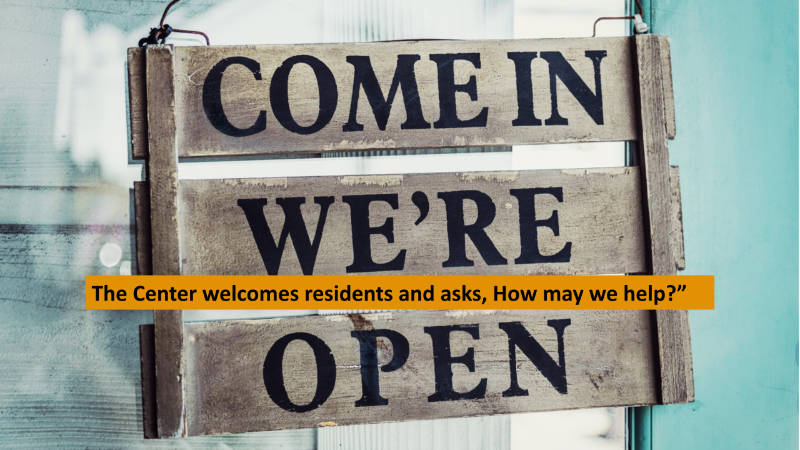
In the eyes of the 100% New Mexico initiative, all county residents are part of one family—interconnected through school, work, community activities and cultural life. The goal of the 100% Family Center is to create a state-of-the-art service empowerment center and service hub with the capacity to meet the interrelated needs of children, students, parents and caregiving grandparents.
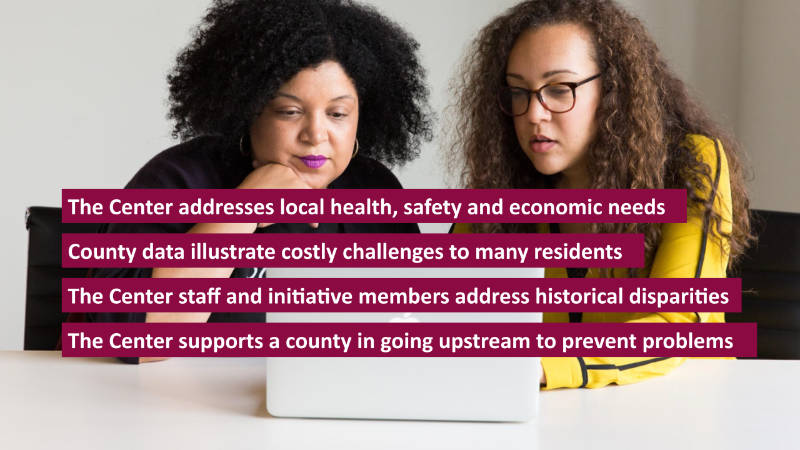
The costly challenges for each county
The need for the tested and efficient delivery of ten vital services is evident by the magnitude of each county’s health, safety and economic challenges. The New Mexico Department of Health-IBIS data system provides to each county the incidence of the following health, safety and economic challenges.
Emotional challenges:
- Youth with persistent feelings of sadness and hopelessness
- Adult mental distress
- Suicide death
Substance use disorders:
- Alcohol-related chronic disease death
- Alcohol-related deaths
- Alcohol-related injury deaths
- Deaths due to drug overdose
Violence and adversity:
- Child abuse victims
- Youth history of forced sex (sexual assault)
- Adverse childhood experiences (ACEs) and rurality
Economic adversity:
- Teen birth rate for girls age 15–19
- Percentage of children under 18 living in poverty
- Percentage unemployed
- Unstable housing/homeless
Food insecurity and nutrition issues:
- Food insecurity rate
- Obesity among adults
- Obesity among adolescents
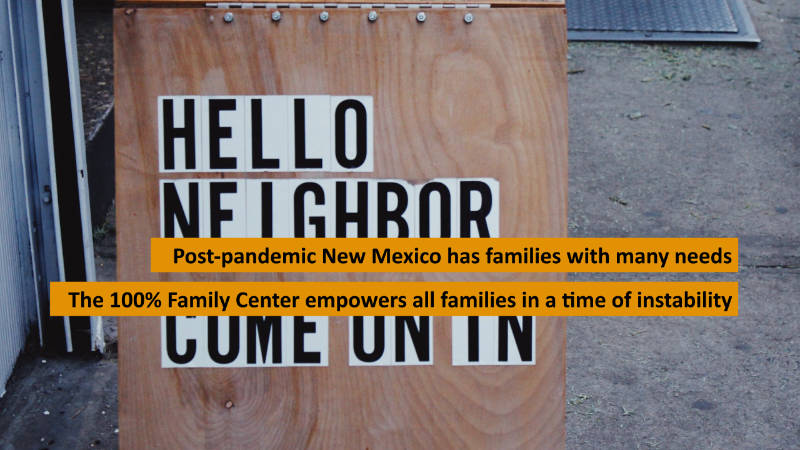
A post-pandemic New Mexico
Post-pandemic, our county and city governments are faced with a stark new reality: loss of jobs, more people dependent on services and lack of a strategic plan to ensure that all ten services for surviving and thriving are developed and implemented in a timely manner. The 100% one-stop service hub is designed to house staff focused on addressing the root causes of all the health challenges in order to empower residents.
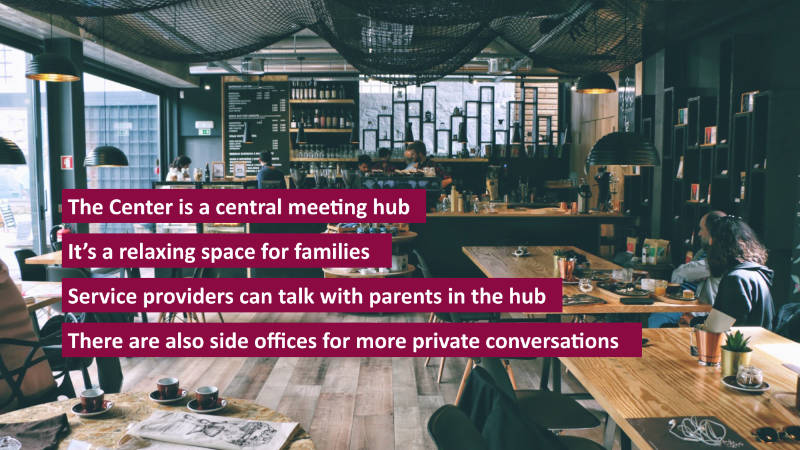
The Center is part meeting place, part community center, and part service center. It’s also, with the 100% New Mexico initiative action teams based there, an empowerment space where projects are developed to increase resident’s health, safety, resilience, education and job readiness.
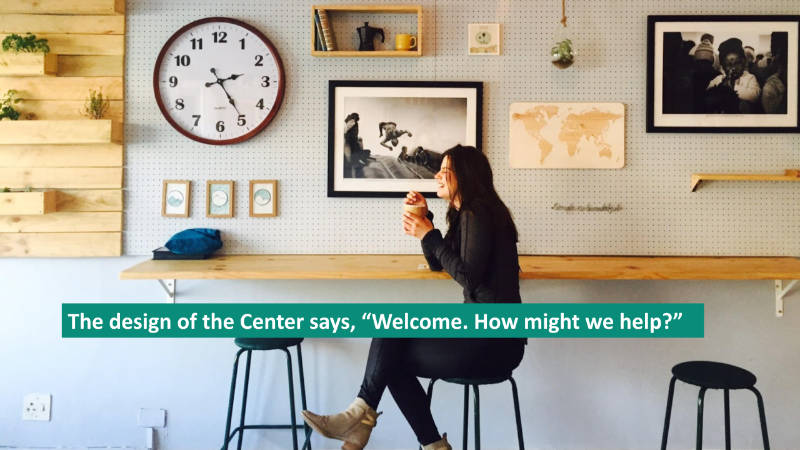
It’s design can take many forms, reflecting the local culture. The most important aspect of the design is that it communicates one powerful message, “You are welcome and we are here to support you.”
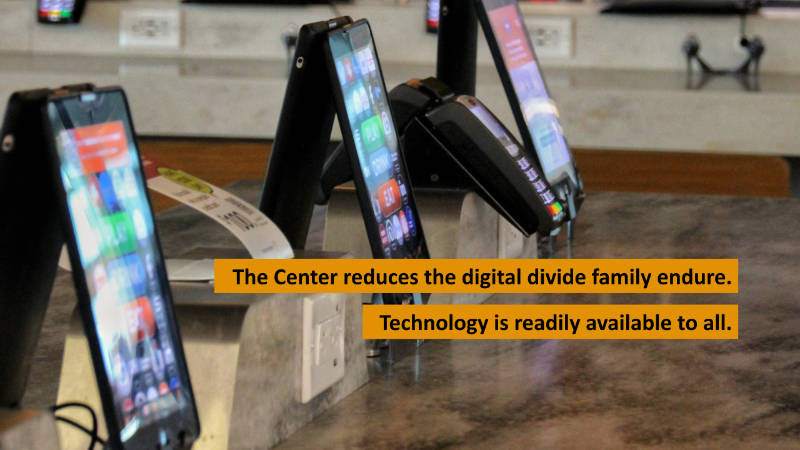
The center is wired for internet access and all guests are empowered to explore web-based services, support and public health information.
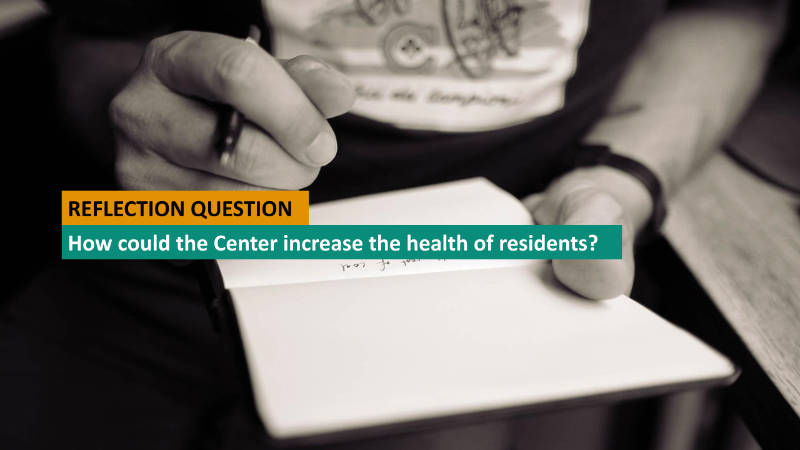
REFLECTION QUESTION: How could the 100% Family Center increase the health and safety of your county residents?
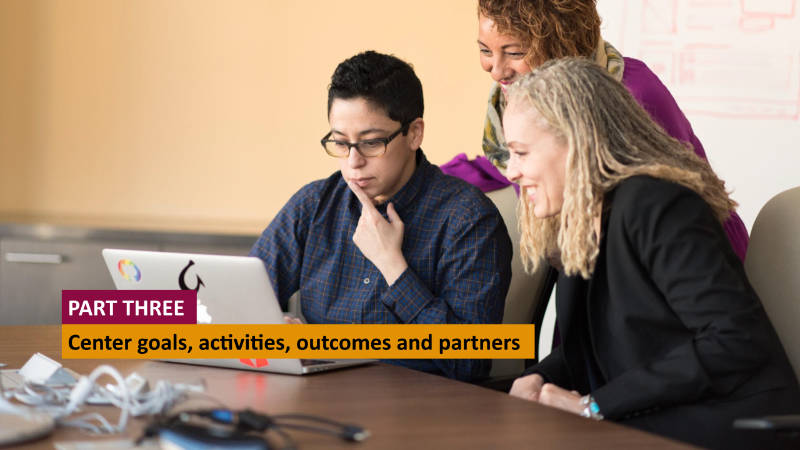
PART THREE: Center’s goals, activities, outcomes and partners
The Goal
Build the capacity of each community within the county’s borders to create a seamless and networked countywide system of care, safety, education and empowerment for 100% of residents. The 100% Family Center, a one-stop service hub, provides a user-friendly, efficient and cost-effective strategy for delivering vital services.
Activities
- Work with local 100% New Mexico initiative members, leadership in ten service areas and experts in architecture, design, facilities management and IT to create the strategic plan that outlines the design of the 100% Family Center, including partners, budgets, funding streams, return on investment, staffing, timeline and management.
- Sponsor a series of 100% Center “preview” public forum events across the county and region to gather feedback from residents and providers on the best way to deliver services to meet their needs in rural settings, and to showcase concepts illustrating the Center’s onsite services and web-based programs.
- Working with city, county, school and community stakeholders, identify the site of the Center, with a location that is easy to access for family members.
- Working with local architects, interior design specialists, IT specialists and related restoration experts, an unused building can be transformed into the 100% Family Center. An abandoned warehouse could become a vibrant meeting place. An unused part of a school building could also be the foundation for the Center.
- With leadership in all ten sectors already engaged in the 100% New Mexico initiative, create a plan for each sector to move staffing to the new centers, meeting physical space requirements and technology supports to ensure a positive user experience for all residents seeking services.
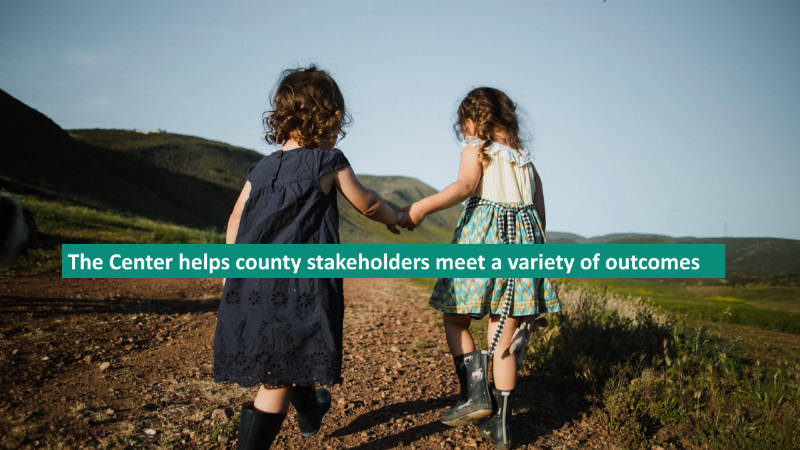
The Center and Health Outcomes
- Increased health in the communities served by the 100% Family Center and county-based 100% New Mexico initiative
- Reduced substance use disorders
- Reduced adversity childhood experiences and maltreatment
- Increased mental and physical health
- Increased economic well-being
- Increased safety
- Decrease in experiences of adversity (e.g. housing insecurity and food insecurity)
- Increased school/college attendance, performance and graduation
- Increased job readiness and work performance
- Improvements in emergency readiness indicators
- Local 100% New Mexico initiative institutionalized within local government
Meeting the need
In our countywide surveys across New Mexico, residents reported the following barriers to services. Note that some services may include almost all barriers while others include a handful of specific challenges. Our county report offers details for county-based 100% New Mexico initiative action teams to analyze.
- Costs too much
- Wait list is too long
- No insurance coverage
- I can’t find a provider
- Appointment times don’t work for me
- It’s too far to travel
- I don’t have reliable transportation
- I feel bad and/or worried about going
- I don’t don’t know where to get this service
- They don’t speak my language
- I was told I don’t qualify
- This service does not exist near me
The research guiding the Center’s development is based on decades of research focused on the social-ecological model, racial equity, and evidence-informed strategies for increasing the effectiveness and accessibility of innovation of services.
Collaborators and Partners
- City Government
- County Government
- School District
- Local Healthcare provider agencies
- New Mexico State Government
- The business sector
- Higher education

Components of the Center
100% Welcome Lobby: Navigator base
The Welcome lobby is where residents are welcomed by staff and can meet with a navigator to access needs. This is an entrance lobby with a welcome kiosk for center staff and a home base for navigators. There would also be a family-friendly waiting area. Potential partners (private sector and public sector): County and city staff engaged in navigation services for residents.
Child care
A space parents can have access for their young children as they take advantage of services and supports. Potential partners (private sector and public sector): Local child care organizations.
Teen center
A place for older children to engage in activities as their parents take advantage of services and supports. Also a space for teens to visit on their own and engage with mentoring activities and all other vital services. Potential partners (private sector and public sector): Boys and Clubs, Big Brothers and Big Sisters, after school program organizations, etc.
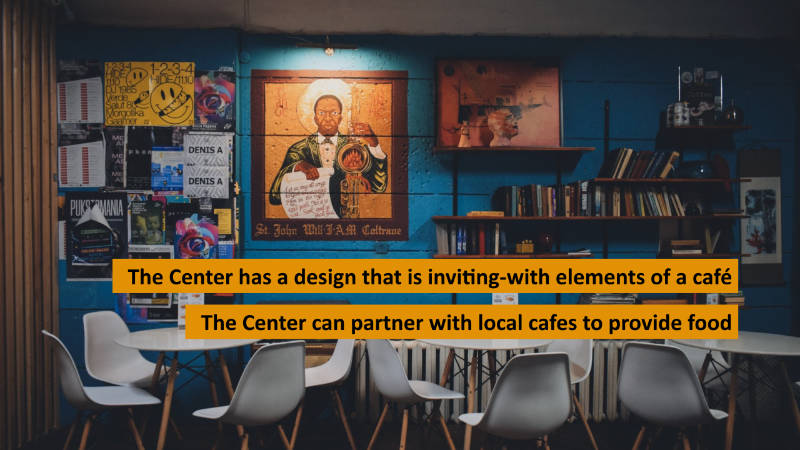
100% Cafe
A place that can provide food to all family members and youth visiting the center. Residents may be experiencing food insecurity and hungry when they arrive. Potential partners (private sector and public sector): Local college/culinary arts program, local restaurants, etc. The 100% Food Action Team can also have a role in designing and maintaining this space and service.

Medical Care Center
The medical care center would be based on the school-based health center model, meeting all standardized physical requirements, equipment requirements and programming requirements. Potential partners (private sector and public sector): Local healthcare providers.
Medical staff, working in alignment with 100% New Mexico initiative action teams, can explore opportunities to to reduce barriers to services include strengthening:
- Urgent Care
- Nighttime Care
- Weekend Care
- Transportation to health care
- Medical care at all school sites serving students and families
- Telemedicine for residents (addressing digital divide to ensure access)
- Telemedicine (professional mentoring, support) for providers
- Assisted care for chronically ill or injured
- Hospice care
Behavioral Health Care
The behavioral healthcare center would be based on the school-based health center model, meeting all standardized physical requirements, equipment requirements and programming requirements. Potential partners (private sector and public sector): Local providers, university school of social work, counseling programs/departments.
Behavioral health care staff, working in alignment with 100% New Mexico initiative action teams can explore opportunities to reduce barriers to services and include strengthening:
- Urgent Behavioral Health Care
- Nighttime Behavioral Health Care
- Weekend Behavioral Health Care
- Transportation to behavioral health care
- Behavioral healthcare at all school sites serving students and families
- Telemedicine for residents (addressing digital divide to ensure access)
- Telemedicine (professional mentoring, support) for providers
- Assisted living for those residents with chronic mental health challenges
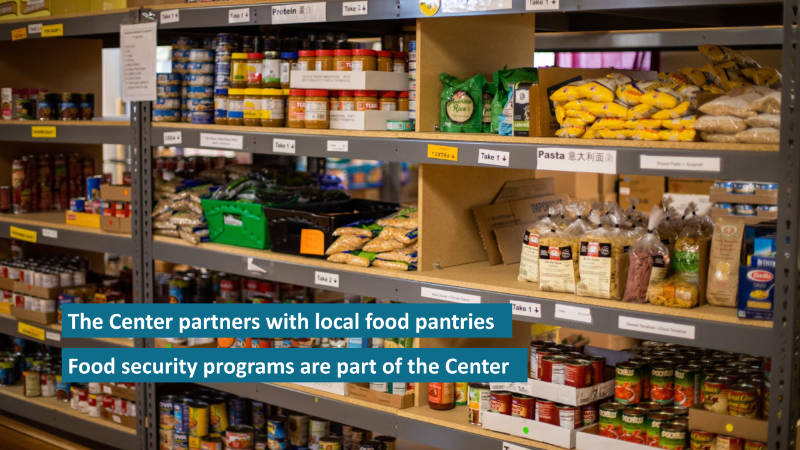
Food security programs and food pantry
The Center staff acknowledge and address food insecurity by forming partnerships with local food pantries and then creating a school-based pantry with parent-friendly hours for both work-at-home and working onsite parents. Need to confirm the status of this programming at the current site. Potential partners (private sector and public sector): NMSU and other institutions of higher learning.
Food security staff, working in alignment with 100% New Mexico initiative action teams, can explore opportunities to reduce barriers to services and include strengthening:
- Expanded hours for weekday food pantries
- Expanded nighttime access to food pantries
- Expanded weekend access to food pantries
- Transportation to food security programs
- Food pantries at all school sites serving students and families
- Web-based support for food security program providers
Housing Security program
This service can be web-based, as a Center navigator can help a resident connect with web-based local housing security programs including domestic violence shelters, homeless shelters, rapid-rehousing programs, and assisted living housing. Potential partners (private sector and public sector): All housing security programs.
Housing security staff, working in alignment with 100% New Mexico initiative action teams, can explore opportunities to reduce barriers to services and include strengthening:
- Expanded nighttime access to housing security programs
- Expanded weekend access to housing security programs
- Transportation to housing security programs programs
- Navigators at all school sites to direct families to housing security programs
- Web-based support for residents (addressing digital divide to ensure access)
- Web-based support for housing security program providers
- Domestic violence shelter and rapid rehousing program
- Homeless shelter and rapid rehousing for high risk populations
- Long-term assisted living for chronically ill and disabled
- Long-term assisted housing for elders
- Long-term assisted living housing for those with mental health challenges, ensuring quality standard of care
- Development of credential program for all housing and supports
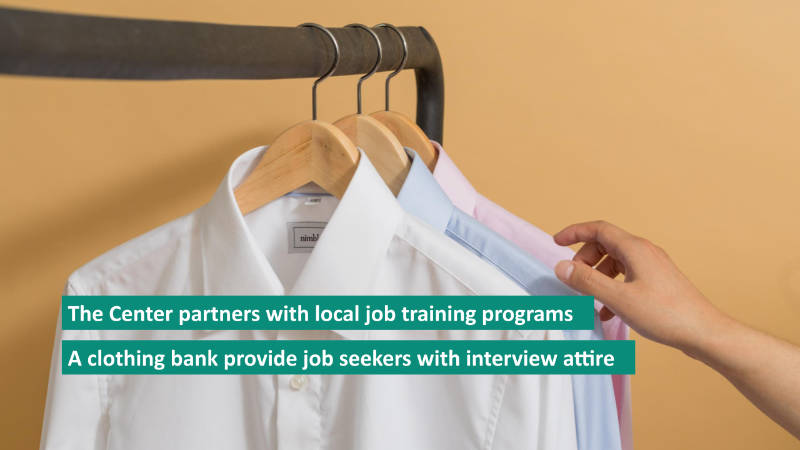
Job training programs
This service can be both onsite and web-based, as a variety of job training programming can be offered, utilizing existing services. Potential partners (private sector and public sector): Leadership within higher education and vocational education programs, state workforce development programs, and private job readiness programs.
Job training program staff, working in alignment with 100% New Mexico action teams, can explore opportunities to reduce barriers to services and include strengthening:
- Expanded nighttime instruction
- Expanded weekend instruction
- Transportation to learning programs
- Expanded web-based education for residents (addressing digital divide to ensure access)
- Web-based professional mentoring and support for educators and staff
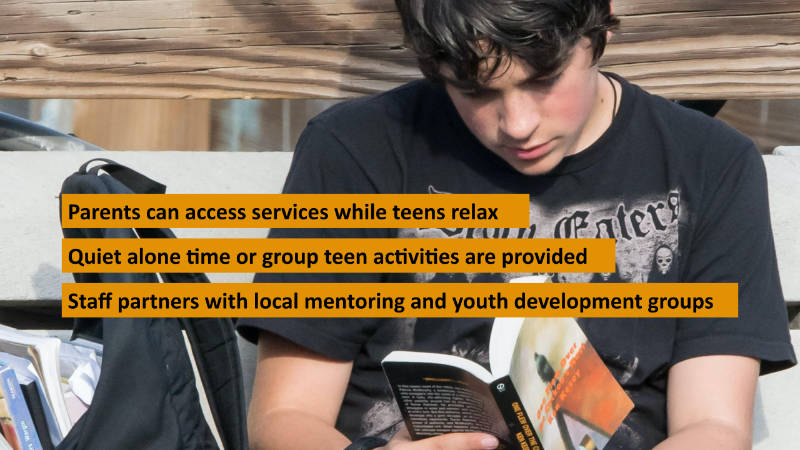
Youth mentoring programs
This service can be both onsite and web-based, as a variety of mentoring programming can be offered, utilizing existing services. Potential partners (private sector and public sector): Big Brothers-Big Sisters, Boys and Girls Club and all youth recreation and academic support programs.
Youth mentoring program staff, working in alignment with 100% New Mexico initiative action teams, can explore opportunities to reduce barriers to services and include strengthening:
- Expanded nighttime mentoring
- Expanded weekend mentoring
- Transportation to mentoring programs
- Web-based mentoring for residents (addressing digital divide to ensure access)
- Web-based professional support for mentors and agency providers

Transportation programs
This service can be web-based, as a Center navigator can help a resident connect with local transport. The Center and 100% Transportation action team can also work with city and county governments to experiment with subsidized ride sharing programs (using the “Uber” model) Potential partners (private sector and public sector): city, county and regional transportation planners and private companies offered app-based ride sharing.
Transportation security staff, working in alignment with 100% New Mexico initiative action teams, can explore opportunities to reduce barriers to services and include strengthening:
- Expanded nighttime access
- Expanded weekend access
- Transportation from homes to transport hub
- Subsidized rideshare program to vital services
- Expanded ride share program for students/youth
- Expanded ride share program for elders
- Domestic violence shelter and rapid rehousing program
- Homeless shelter and rapid rehousing for high risk populations
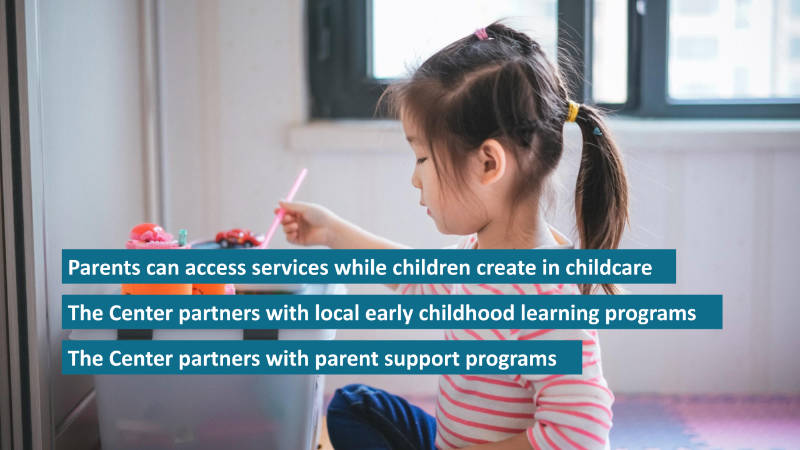
Early childhood learning programs
This service can be both onsite and web-based, as a variety of early childhood learning programming can be offered, utilizing existing services. Potential partners (private sector and public sector): Head Start and all early childhood learning program organizations.
Early childhood learning program staff, working in alignment with 100% New Mexico initiative action teams, can explore opportunities to reduce barriers to services and include strengthening:
- Nighttime child care (for night shift staff)
- Weekend child care
- Transportation to early childhood learning programs
- Web-based education for residents (addressing digital divide to ensure access)
- Web-based professional mentoring and support for providers
Parent Support programs
This service can be both onsite and web-based, as a variety of parent supports can be offered, utilizing existing services. Potential partners (private sector and public sector): All local parent support organization staff and high ed programs focused on parents.
Parent support staff, working in alignment with 100% New Mexico initiative action teams, can explore opportunities to reduce barriers to services and include strengthening:
- Urgent Parent Supports local hotline
- Nighttime Parent Supports
- Weekend Parent Supports
- Transportation to parent supports
- Parent supports at all school sites serving students and families
- Web-based education for residents (addressing digital divide to ensure access)
- Web-based professional mentoring and support for providers
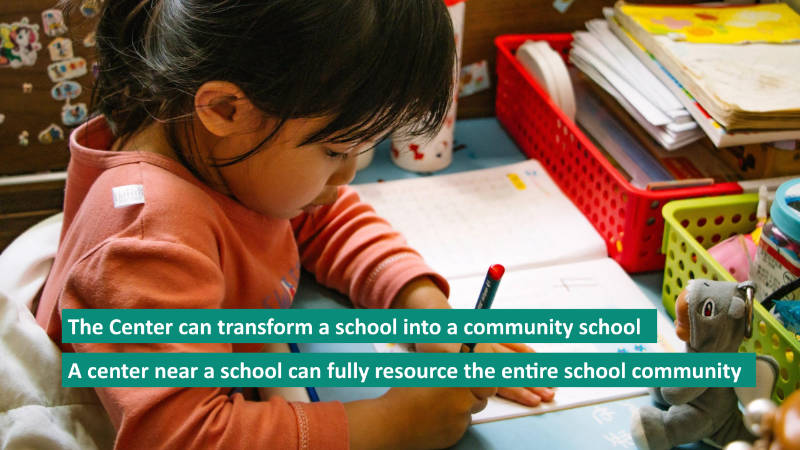
Fully-resourced community schools
This Center can be part of turning a local school into a fully-resourced community school, following the evidence-based strategies and guidelines for a community school. Service can be both onsite and web-based, as a variety of early childhood learning programming can be offered, utilizing existing services. Potential partners (private sector and public sector): School superintendent’s office, school board members, and community-based academic support organizations.
Community school program staff, working in alignment with 100% New Mexico action teams, can explore opportunities to reduce barriers to services and include strengthening:
- The Community Schools model with a director of community schools and additional staffing and programming
- Expanded nighttime instruction
- Expanded weekend instruction
- Transportation to learning programs
- Expanded web-based education for residents (addressing digital divide to ensure access)
- Web-based professional mentoring and support for educators and staff
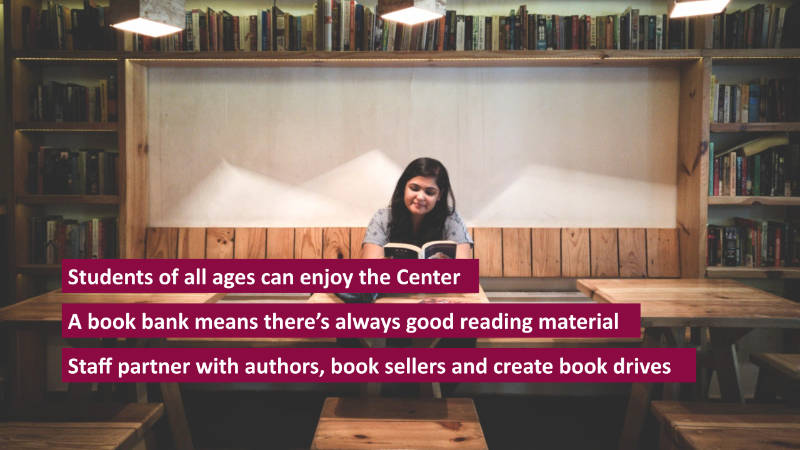
The Center’s main meeting hub can be a place for reading, relaxing, researching, networking and for evening and weekend events.

The Center staff and their partners with the 100% New Mexico initiative can engage all the county’s political, cultural, professional, academic, and civic groups. The goal is to be a center for everyone from all communities.
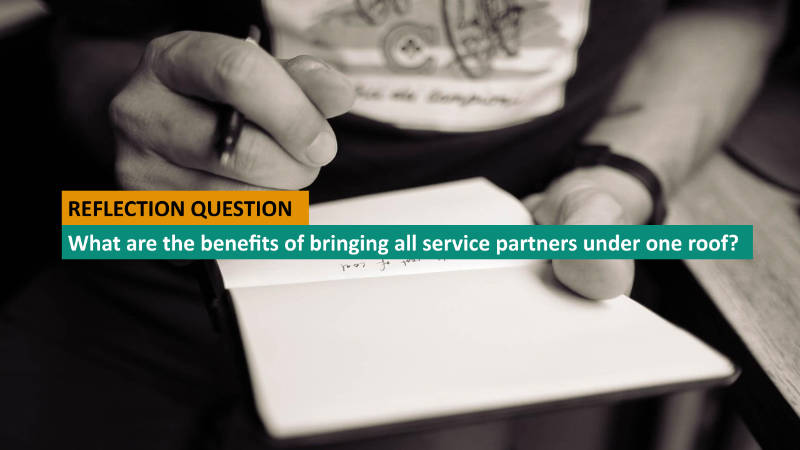
REFLECTION QUESTION: What are the benefits of bringing call service providers under one roof, for both residents and service agency staff?

PART FOUR: Visioning, funding, designing, launching and return on investment
100% Initiative: Holding the Vision
The Center is part of the strategic plan of the local 100% New Mexico initiative. Initiative leadership work to turn the vision of the Center into reality.

The initiative has a home base in the Center, a place to coordinate projects and meet with partners. The initiative’s office coordinates the activities of the following teams:
- Leadership team
- Data and Research team
- Resource Directory team
- Task Force on Histories and Cultures
- Resource development team
- 100% Mural Project-Public Awareness
- Medical/dental action team
- Behavioral health care action team
- Food security action team
- Housing security team
- Transportation security action team
- Parent supports action team
- Early childhood learning action team
- Community schools action team
- Youth mentor action team
- Job training action team
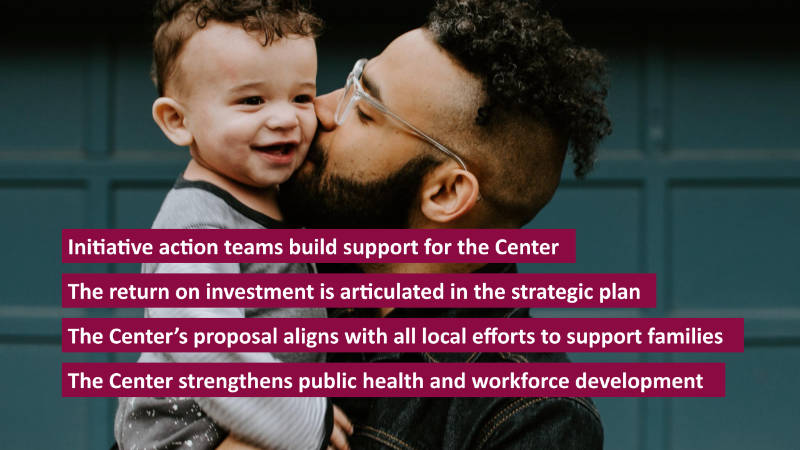
The initiative takes a leadership role in developing the strategic plan for the 100% Family Center. With strong relationships established in a county’s ten service sectors and local government, the initiative leadership is poised to craft a powerful plan with buy-in from local stakeholders.

The Center’s proposal and plan is the result of trusting relationships between stakeholders on all levels of government and all service areas.

The funding of the 100% Family Center is a powerful statement made by county and city lawmakers. Change agents supporting the Center understand that local government budgets represent values related to the importance of children.

The 100% Family Center is a collective impact project. It results from a shared vision, goals, and shared understanding of data use, communication strategies, and interrelated activities.

An idea as groundbreaking as the 100% Family Center can be achieved through the belief that with the shared vision, anything is possible.
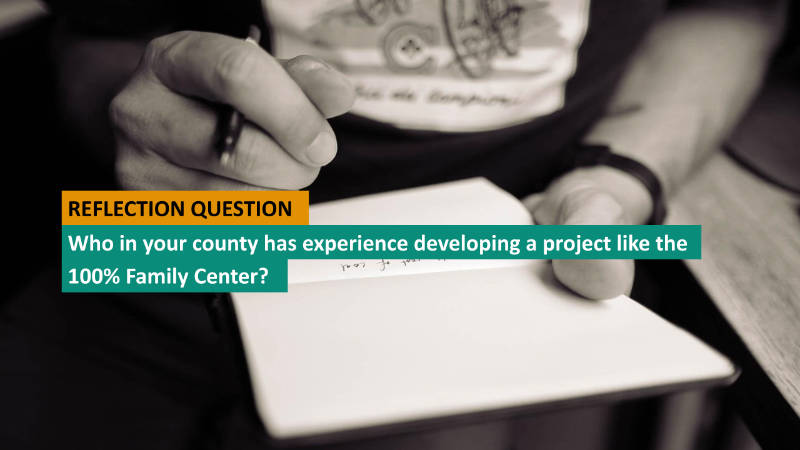
REFLECTION QUESTION: Who in your county has experience developing a project like the 100% Family Center?

NEXT STEPS: Reflect on the presentation and your notes. Review the books and links to research provided. Reach out to colleagues, friends, family, neighbors and local elected leaders to discuss the 100% New Mexico initiative. We have designed this presentation so that it can be used with local elected officials within city and county government and school board members, agency leaders (representing the ten vital services), representatives from local higher education, faith-based and community-based organizations and your neighbors and friends.
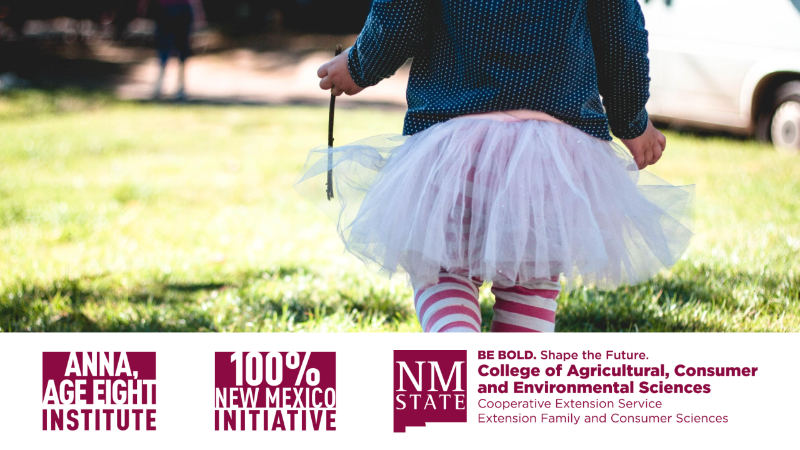
Consider registering for the next 100% Power Hour 7-part webinar series to learn more about the 100% New Mexico initiative. We hope to see you there. For any questions about the webinar series, the initiative, research guiding the process or practical steps in starting the initiative, please contact us annaageeight@nmsu.edu.
Additional Resources
Research
Explore Our Research Pages

